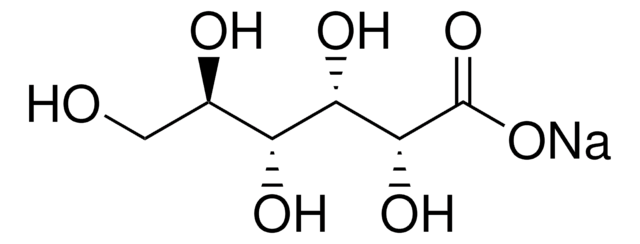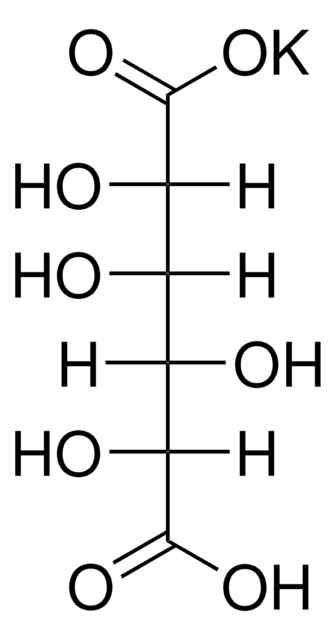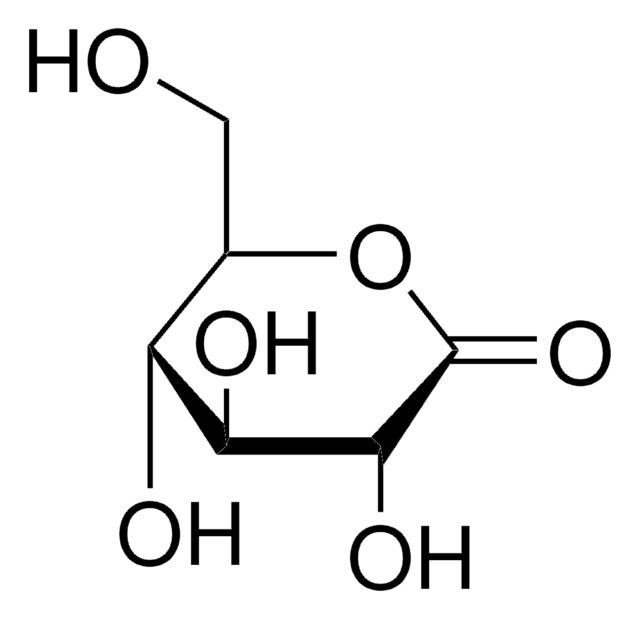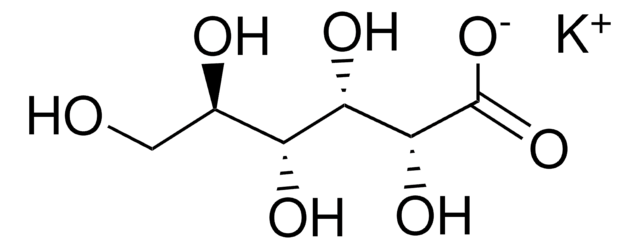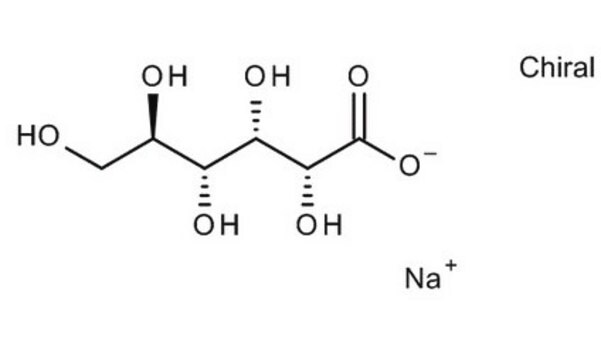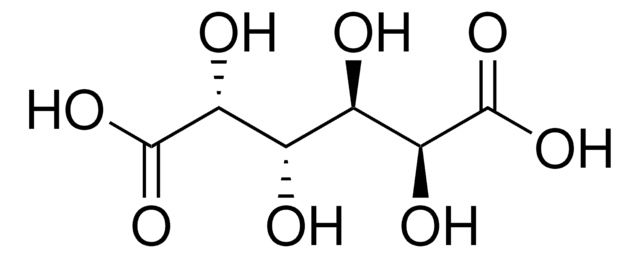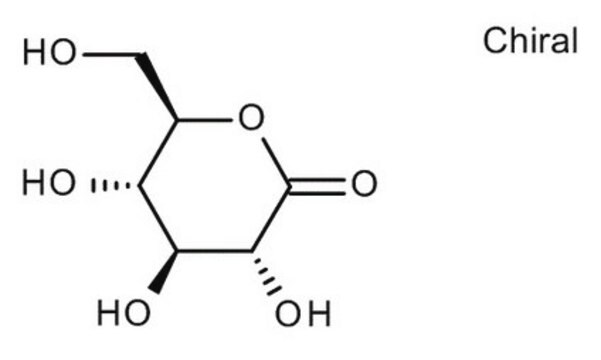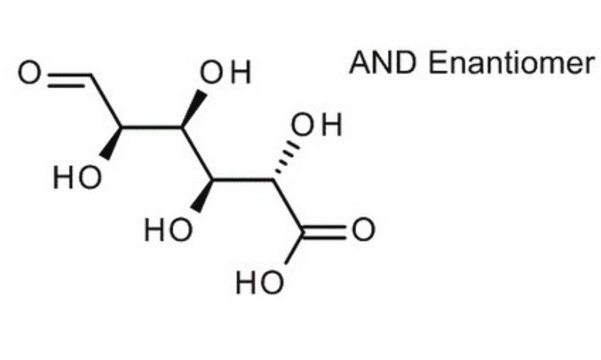G1951
D-Gluconic acid solution
49-53 wt. % in H2O
Synonyme(s) :
2,3,4,5,6-Pentahydroxycaproic acid
About This Item
Produits recommandés
Forme
viscous liquid
Niveau de qualité
Activité optique
[α]/D +9.0 to 15.5°
Concentration
49-53 wt. % in H2O
Indice de réfraction
n20/D 1.4161
Densité
1.234 g/mL at 25 °C
Chaîne SMILES
OC[C@@H](O)[C@@H](O)[C@H](O)[C@@H](O)C(O)=O
InChI
1S/C6H12O7/c7-1-2(8)3(9)4(10)5(11)6(12)13/h2-5,7-11H,1H2,(H,12,13)/t2-,3-,4+,5-/m1/s1
Clé InChI
RGHNJXZEOKUKBD-SQOUGZDYSA-N
Vous recherchez des produits similaires ? Visite Guide de comparaison des produits
Application
used in hygienic products, food and pharmaceutical industry.
Code de la classe de stockage
10 - Combustible liquids
Classe de danger pour l'eau (WGK)
WGK 1
Point d'éclair (°F)
Not applicable
Point d'éclair (°C)
Not applicable
Équipement de protection individuelle
Faceshields, Gloves, Goggles, type ABEK (EN14387) respirator filter
Faites votre choix parmi les versions les plus récentes :
Déjà en possession de ce produit ?
Retrouvez la documentation relative aux produits que vous avez récemment achetés dans la Bibliothèque de documents.
Les clients ont également consulté
Notre équipe de scientifiques dispose d'une expérience dans tous les secteurs de la recherche, notamment en sciences de la vie, science des matériaux, synthèse chimique, chromatographie, analyse et dans de nombreux autres domaines..
Contacter notre Service technique

